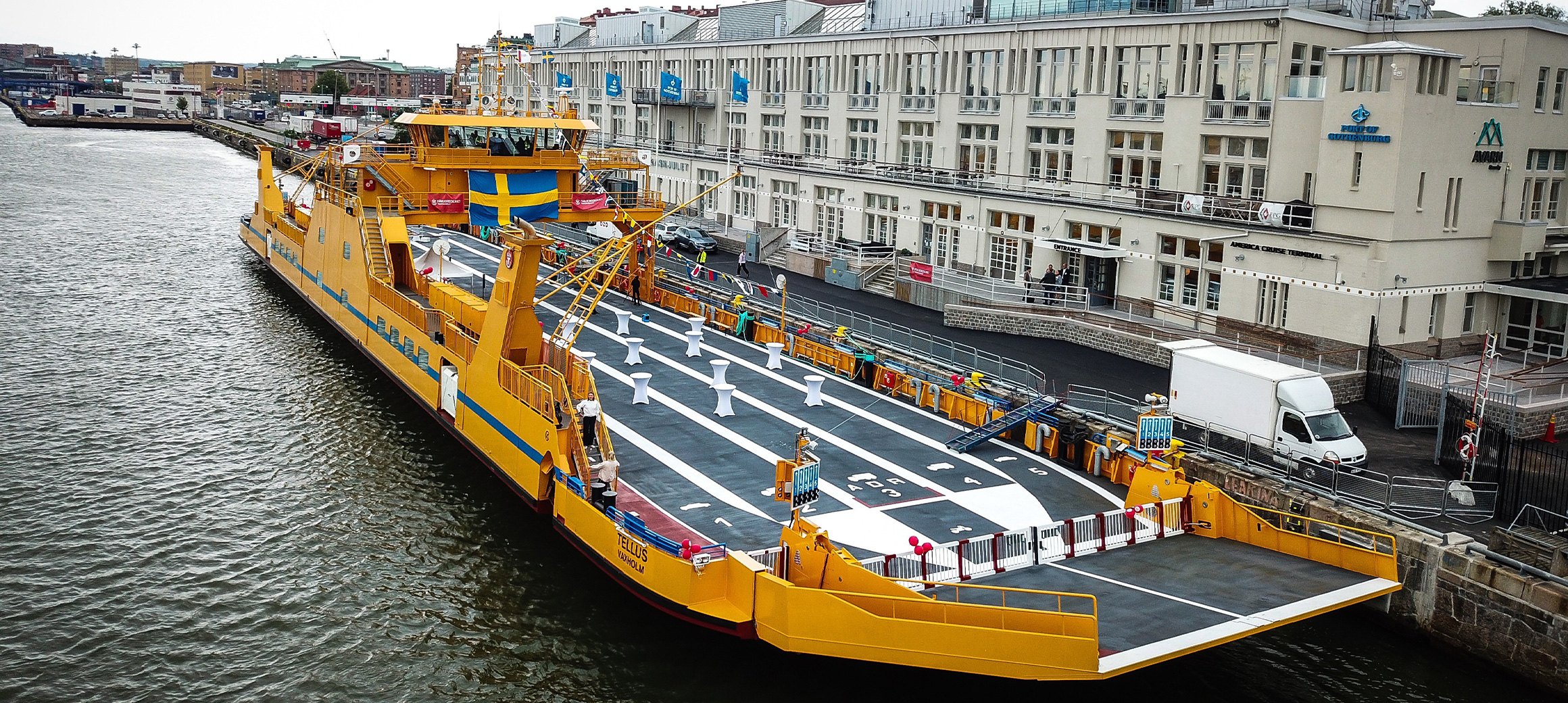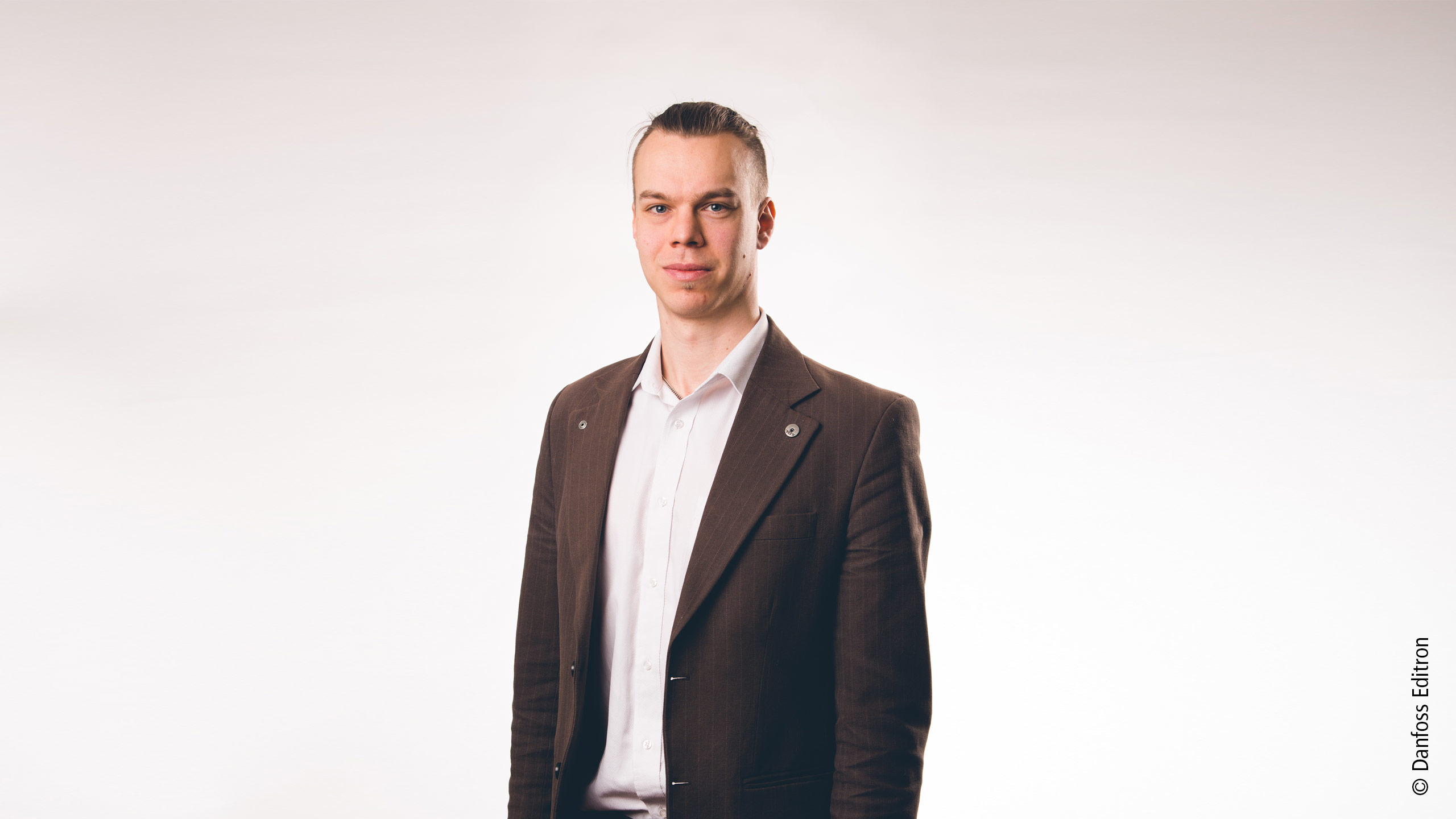

Automation and drive system monitoring for Sweden’s largest hybrid ferry
Tellus, Sweden’s largest hybrid ferry, can safely transport up to 297 passengers and 80 cars per trip on the roughly 2 km long Gullmarsleden link between the towns of Uddevalla and Lysekil. The link is considered one of Sweden’s busiest sea routes, accommodating over 100,000 vehicles per month. Two specialist companies have now joined forces to ensure that the ship continues to offer quick and reliable transportation: Danfoss Editron, the Finnish supplier to shipbuilders that specializes in electric drive solutions, and Beckhoff, which supplies PC-based controls for the automation and monitoring of the hybrid diesel/electric drive system.
Among its many services, Danfoss Editron supplies state-of-the-art, decentralized DC power systems up to 6 MW for small and medium-sized seagoing and inland vessels. While the ship systems supplier relies on its own technologies and expertise for the power electronics and electrical machines, it has counted on Beckhoff to supply the control components for the Editron marine system for many years.
Embedded PCs as the core of drive control
The drive and ship control system is divided into a stern and a bow system, which communicate with each other, with the control unit in the wheelhouse, and with the diesel generators and battery system in the hull. While the Danfoss power converters in the power plant and propulsion systems are connected to the Beckhoff CX9020 Embedded PCs as drive controllers via CANopen, the controllers communicate with each other via the TwinCAT ADS communication protocol. This network is designed as a reliable ring structure.

A typical configuration of the Editron control system comprises two CX9020 Embedded PCs with directly connected bus terminals and additional decentralized I/O box modules with IP67 protection. “The spectrum here ranges from digital inputs and outputs to temperature measurements and the acquisition of additional analog signals,” explains Jussi Paakkunainen, a system technology manager at Danfoss Editron, illustrating the required range of I/O components from Beckhoff.
Depending on the complexity of the system, it can be beneficial to record the inputs and outputs on a decentralized basis. This is the case for the Tellus project, which involves temperature monitoring of the distribution cabinet for the power supply via a decentralized I/O unit, which is integrated into the control network by a BK9050 Ethernet TCP/IP Bus Coupler. “It makes sense to use decentralized units like this for retrofit projects in particular, as there is often limited installation space available on ships for additional control cabinets,” emphasizes Jussi Paakkunainen. Simplifying the signal cabling between decentralized system sections and the control units was a key aspect for him when designing the control architecture.
Compact and modular control technology offers advantages
Both the fieldbus support and the minimal space requirements of the Beckhoff hardware in the control cabinets offer considerable advantages during the project planning and programming phases. The CX9020 Embedded PCs also have a role to play here, as Jussi Paakkunainen explains: “Both the CANopen interface for the integrated power electronics and the TCP/IP-based communication interfaces make for a competitive advantage in terms of keeping things compact, which is usually a decisive factor anyway, but particularly on board a ship. It is not always easy to find a suitable place to install control systems within an engine room, but the compact hardware from Beckhoff meant we could overcome this obstacle in no time. On the Tellus, we simply installed the Embedded PCs along with the associated hardware in a wall cabinet.”
With regard to ship control, the CX9020s pick up signals from the wheelhouse and process them together with information from the diesel/electric generators, as well as the batteries, inverters, converters and motor controls. This ensures both the required propeller speed and the appropriate level of energy generation for system performance. “The algorithms for optimal control of the hybrid power plant work in conjunction with the CX9020 Embedded PCs to make for smooth, efficient and reliable ship operation,” summarizes Jussi Paakkunainen.